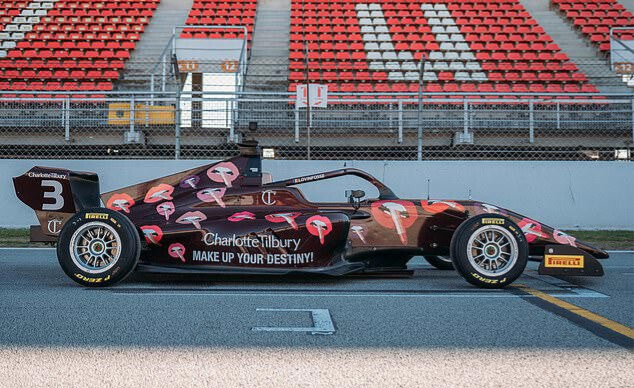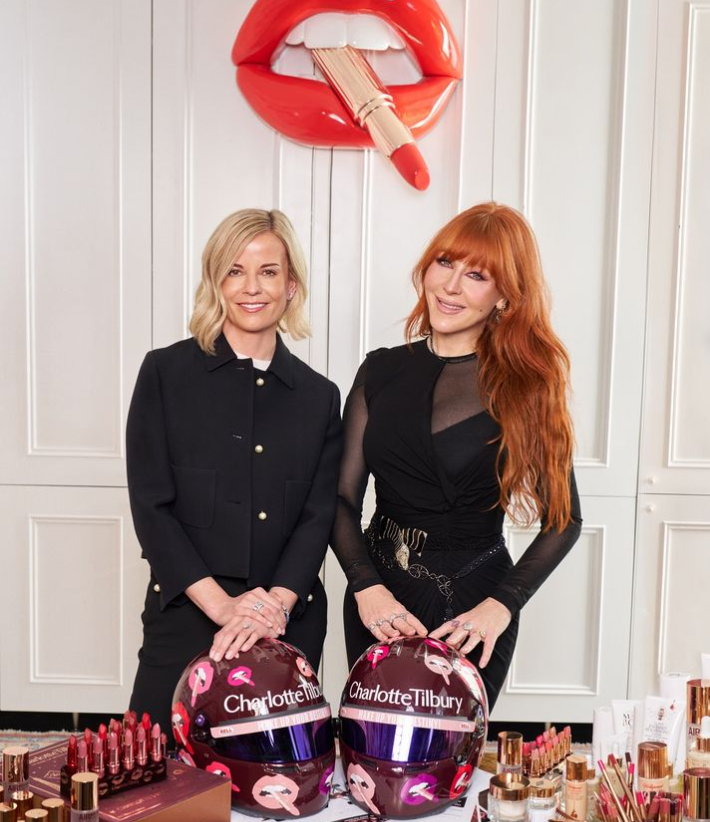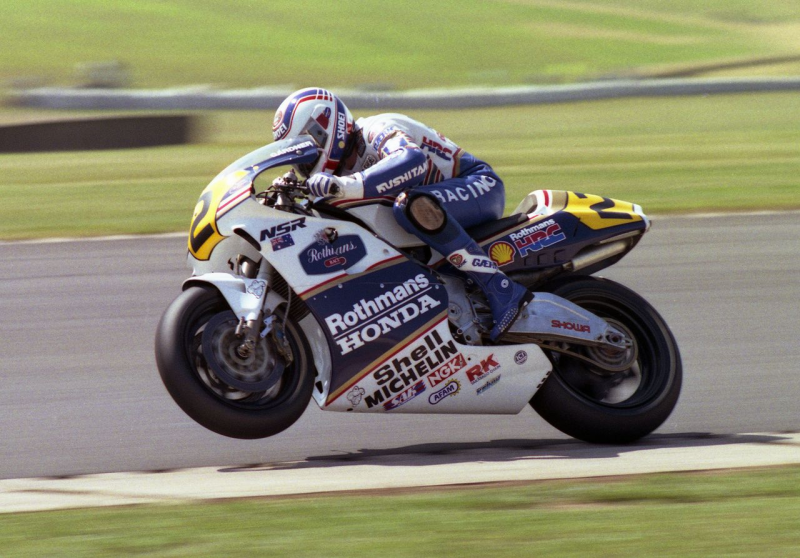Something of a topic that has yet to be discussed in recent years throughout motorsport. However, the rise of partnerships including Charlotte Tilbury and e.l.f. in joining these categories, which will be touched on later, aren't the first feminine-based sponsors to link themselves to this male-dominated world. Through some digging, it was actually Yardley who was the first female-based sponsor to be featured on the side of BRM (British Racing Motors) in 1971 and McLaren in 1972. The British-based company are well-known for producing cosmetics and fragrances. So why is the idea of more women-led sponsors reaching bigger headlines in today's news?
The First Positive Stepping Stones
Major makeup brand, Charlotte Tilbury, announced at the start of the F1 Academy season that Lola Lovinfosse would be running their sponsor on her Rodin Motorsport car. This huge deal was heavily supported by Susie Wolff, managing director of the category, praising the female founder of the same name as "a woman with a vision who built an incredible brand and company. Products which I use and love" (@susie_wolff on Instagram).
“I’m super happy and proud to be joining Charlotte Tilbury operated by Rodin Motorsport Team,” said Lola Lovinfosse who drives under the number 3, “I’m really looking forward for the season to start, we have worked a lot with the team. I’m ready to fight!”
For some of my male readers or generally people who don't already know, Charlotte Tilbury paraded into the makeup industry after building a strong following on YouTube by uploading makeup tutorials. From her success, she launched her own brand in London in 2013 while opening a Covent Garden store in 2015.
More recently in 2020, a huge stake was sold to Spanish fashion company, Puig which valued the 8-year-old company at £1.3 billion (€1.48 billion).
However not long after this news was released, more engaging talks were being conducted on the other side of the world. Another makeup company e.l.f. (standing for eyes, lips, face) had publicised that they would be the primary sponsor for Katherine Legge's IndyCar chassis at Coyne Racing with RWR. The flashing pink and black livery will be driven on May 26th 2024 at the Indianapolis Motor Speedway (indycar.com).
Legge, who drove for the first time in 2012 and is only the 9th woman to ever compete in Indy 500, stated that the positive movement of female-based sponsors is "lifting women up and challenging norms" (indycar.com).
Being an older company that was founded in 2004 by Joseph Shamah and Scott Vincent, e.l.f. was semi-popular due to social media influence and impactful collaborations only after a few years of foundation. It only seems fitting that they use IndyCar as an outlet to emphasise their brand further in the same way that is happening across the European pond. After all, sponsors always rely on 'if I scratch your back, you can scratch mine' in simpler terms.
"We quickly realised our shared commitment to supporting women in male-dominated fields," explained Patrick O'Keefe, President of Integrated Marketing Communications for e.l.f. (investor.elfbeauty.com).
If you haven't noticed already, this is a huge game-changer for the way we think about women in racing. It fills the media space with the true perception of female empowerment in motorsport rather than the harmful stereotypes that are set in place through uneducated members of the paddock and fans alike. It's about taking responsibility and accepting that this is wrong and change needs to be brought through recognition and the ability to be informed into the true picture that they are knowledgeable. This is the importance that women hold in a vastly adapting industry.
What Is A Partnership or A Sponsorship?
First of all, let's strip this down to complete basics and understand why partnerships and sponsorships are used in motorsport categories. One of the first sponsorships in Formula One was a cigarette brand, Gunston, featured on John Love's Brabham at the South African Grand Prix with a clear aim to sell more of their products. It creates corporate exposure and makes the brand known to a range of fans in an attempt to coax them into buying (rtrsports.com). Even if this isn't the case, you'll most likely still recognise the brand and could engage with others, inadvertently convince them to consume.
However, this relationship has to be symbiotic for these partnerships to be successful. Without a decent amount of cash being put into manager's pockets, how else were they expected to run? No rough sponsor would ever be recorded in the history books. For example, one of the most talked about liveries today is still Ayrton Senna's Marlboro McLaren. The same can be said for the Rothmans Honda motorbike livery, driven by Wayne Gardner in the 80s and 90s.
But these smoky brands must be left in the past. Now it's time for the girls to stand up and have their designs fashioned across the world, promoting the wide community of female-run businesses on cars and bikes. After all, there's certainly money that can be funded into projects like what these two makeup brands have done; it's simply a case of finding the right companies that can reflect the same ambitions.
It almost seems too easy, although there is still an issue of finding hugely successful companies that have been founded by women to fund teams out of their own pocket.
Lots of motorsport teams will encourage the partnerships of technology-based companies during an age like today where this is a crucial part of racing with lots of expertise to give. As of 2022, only 24% of people in these leadership roles were women. Similarly, manufacturing of consumer goods was still only 34% (weforum.org). Even more recent studies have shown that men outweigh female CEOs by approximately 17 to 1 which is still an enormous amount and only 41 companies in the Fortune 500 are run by women (fortune.com), making the market even smaller to be able to give resources to sporting entertainment.
Is it simply a waiting game until a new generation of female leaders rises? Or should motorsport categories be putting more trust into these business partners and what they can offer to the teams in regard to social foundations with the introduction of more female fans?
There's no doubt that there's still a way to go with female sponsors in different motorsport categories either. This is the perfect time to exchange ideas from 4 wheels to 2 wheels like MotoGP and WSBK to dive into the wave of opportunities this could bring on a financial basis but also on a fan basis. Perhaps one to sponsor Maria Herrera in her MotoE career? Or even Ana Carrasco who will ride in the newly formed FIM Women's Circuit Racing World Championship? I personally think that would be a better fit than including OnlyFans as a main sponsor (this is a true story for the Moto2 American Racing Team, take a look for yourselves).
These partnerships and sponsorships are pivotal steps into recognising female inclusion within motorsport, internally and externally. It allows certain individuals to realise that this demographic of the fan base has been rapidly increasing in numbers around the past 10 years and shows no sign of slowing down due to the growing presence of these brands.
Let's hope that in time, this fight will be won by changing perceptions and valuing women's space in the enterprise.
If you haven't already, go and follow this website's Instagram page @otslmotorsport ! This is where you'll find loads of extra content to keep you updated on all things motor racing during race weeks, particularly Formula One, F1 Academy and MotoGP. What are you waiting for?






Add comment
Comments